Educational Impact of Engaging Narratives
Introduces new vocabulary in context, aiding comprehension.
Teaches narrative structure (beginnings, middle, ends).
Fosters listening skills, pronunciation, and fluency.
Reading stories isn't just a pastime; it's a powerful catalyst for children's education. Australian children's literature plays a crucial role in developing literacy skills while offering cultural insights. Are you ready to discover how these stories can shape young minds?
Australian children's literature profoundly impacts literacy by enriching vocabulary, enhancing comprehension, and fostering a love for reading. The visual below summarizes the key ways engaging narratives contribute to these developmental areas. To learn more about specific titles, explore our Australian Children's Book Awards 2025.
Introduces new vocabulary in context, aiding comprehension.
Teaches narrative structure (beginnings, middle, ends).
Fosters listening skills, pronunciation, and fluency.
Illustrations provide context clues for meaning inference.
Repetition reinforces vocabulary retention effectively.
Diverse themes introduce new words and concepts.
Fosters empathy by presenting varied worldviews.
Challenges critical thinking through complex plots/characters.
Helps children relate experiences and appreciate differences.
The journey of nurturing young readers begins with the stories we choose to share. Australian children's literature plays a vital role in this journey, providing engaging narratives that spark curiosity and creativity. Through the power of storytelling, children develop essential literacy skills that serve as a foundation for their future learning. This section highlights the profound educational impact of these stories on literacy development.
As an educator, I’ve seen firsthand how literature can transform a child's understanding of language and communication. By immersing them in rich narratives, we not only entertain them but also equip them with vital skills that will benefit them throughout their lives. Let’s explore how engaging narratives contribute to literacy skills.
Engaging narratives in children's literature are more than just enjoyable tales—they are powerful tools for developing literacy skills. When children engage with stories, they learn to recognize patterns in language, decipher words, and understand context. By reading books, they are exposed to diverse vocabulary and sentence structures, which enhances their own language use.
These elements create a rich tapestry of learning opportunities, where children can thrive as they explore new worlds through books. As they engage with well-crafted narratives, their interest in reading grows, paving the way for lifelong literacy.
Picture books are a wonderful gateway to vocabulary development for young readers. With their vibrant illustrations and engaging stories, these books offer a unique way to introduce new words and concepts. Children are naturally drawn to the colorful visuals, which enhances their understanding of the text.
Through picture books, parents and educators can make learning new words fun and interactive. As children connect images with words, they build a robust vocabulary that will serve them well in their academic journeys.
Diverse narratives not only enrich children's reading experiences but also enhance their comprehension skills. When children encounter various characters, settings, and plots, they learn to navigate different perspectives and cultural contexts. This exposure broadens their understanding and encourages critical thinking.
Incorporating diverse literature in reading sessions not only enhances comprehension but also cultivates a sense of belonging among young readers. It’s a powerful way to prepare them for a diverse society, ultimately enriching their literacy skills.
As we delve deeper into the impact of Australian children's literature, it's crucial to explore how cultural representation and inclusivity shape literacy development. Stories that reflect a variety of backgrounds and experiences provide children with a sense of belonging and understanding. This section examines the significance of diverse family structures, Aboriginal narratives, and folklore in shaping young readers' perspectives.
Here's a brief recap of the key points discussed so far:
As we journey through the captivating world of Australian children's literature, it’s clear that its impact on literacy and culture is profound. These stories not only entertain but also educate. They help children develop essential skills while building connections to their heritage and the diverse society around them. Here are some key takeaways on the educational and cultural value of these narratives:
By weaving cultural representation into the fabric of their stories, Australian authors empower children to see themselves reflected in literature. This not only validates their experiences but also enriches the reading experience for all young readers.
In my experience with Kids Book Guide, I've seen firsthand how inclusive literature can ignite a lifelong love for reading in children. When children encounter characters and stories that mirror their own backgrounds and experiences, they’re more likely to engage deeply with the text. Inclusivity in literature encourages children to appreciate differences and embrace diversity, fostering a community of readers who value each other’s stories.
These practices not only make reading enjoyable but also cultivate an environment where children feel safe to explore their identities and the identities of others.
Reading together is a wonderful way for families to bond! When parents and children share stories, they create cherished moments that strengthen their relationship. As we delve into stories, we also develop vital social skills. Reading enhances communication and encourages children to express their thoughts and feelings. Here are a few ways reading contributes to family dynamics and social skills:
By integrating reading into family routines, such as bedtime stories or weekend reading sessions, we create an atmosphere where literacy thrives and emotional connections flourish!
A: Australian children's literature enhances literacy by enriching vocabulary, improving comprehension, and fostering a love for reading through engaging narratives. It introduces new words in context and teaches narrative structures.
A: Picture books are excellent for vocabulary development. Their vibrant illustrations provide context clues for new words, and the repetition of phrases helps reinforce vocabulary retention. They also introduce diverse themes and concepts.
A: Diverse narratives expose children to different perspectives, characters, and cultural contexts, which broadens their understanding and encourages critical thinking. This exposure helps foster empathy and allows children to relate to various experiences.
A: Cultural representation in literature fosters a sense of belonging and validates children's experiences when they see themselves reflected in stories. It also enriches the reading experience for all young readers by exposing them to diverse backgrounds and perspectives, promoting inclusivity and understanding.
A: You can support Australian children's literature by volunteering at local libraries, organizing book drives for diverse literature, participating in community events celebrating Australian authors, and advocating for inclusive literature selections in schools and homes.
Supporting Australian children's literature goes beyond individual reading practices—it's about creating a community of readers! There are numerous ways we can actively participate in promoting and supporting local literature initiatives. Here are some suggestions:
By engaging in these activities, we not only enrich our own literary experiences but also inspire others to recognize the profound value of Australian children's literature.
Local libraries and schools are at the heart of promoting literacy in our communities. I often recommend that parents and educators get involved with their local libraries to support reading initiatives. Here’s how:
These activities not only enhance access to literature but also connect families with valuable resources that can nurture a love for reading.
Creating a diverse reading environment is vital for our children’s growth. As parents and educators, we can actively choose books that represent a variety of perspectives. Here are some tips for promoting diverse literature:
These strategies can help children appreciate the rich tapestry of stories available to them and foster an environment of acceptance and understanding.
Book festivals and author visits are fantastic opportunities to engage with literature in a lively and interactive way! Attending these events can introduce children to new authors and genres, inspiring them to explore literature further. Here’s how to make the most of these experiences:
By immersing ourselves in these enriching experiences, we can support our local literary community and instill a love for stories that lasts a lifetime!
Here is a quick recap of the important points discussed in the article:
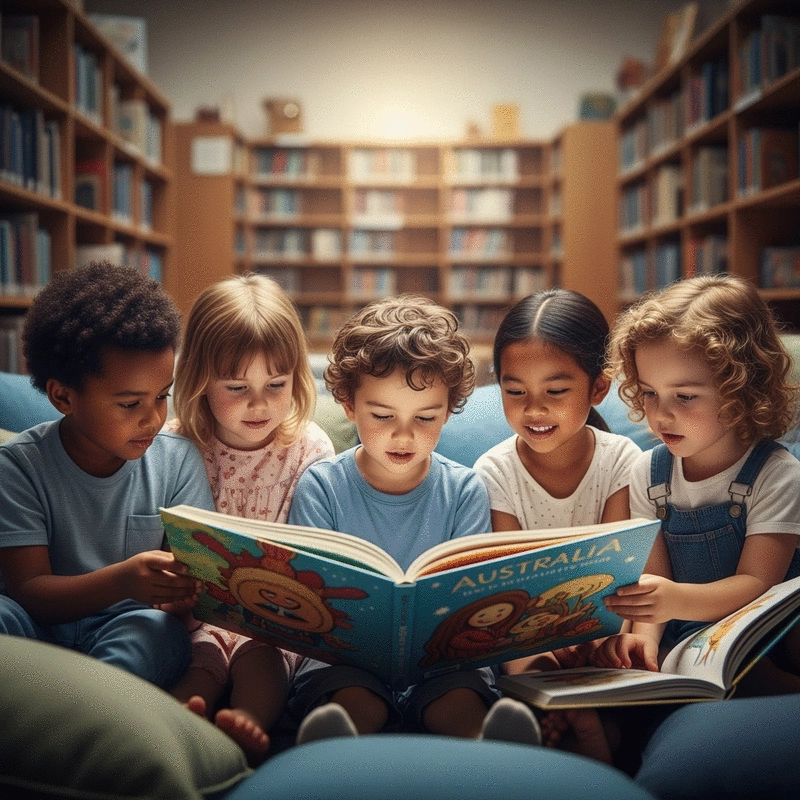

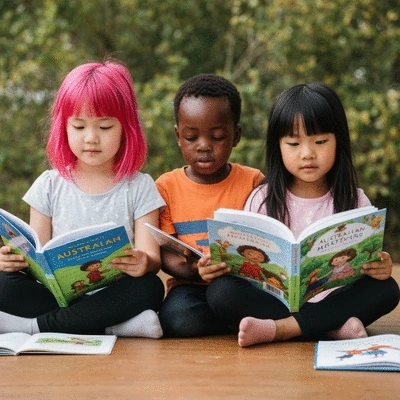
 As you navigate the vibrant world of children's literature, think about how a simple signature can t
As you navigate the vibrant world of children's literature, think about how a simple signature can t
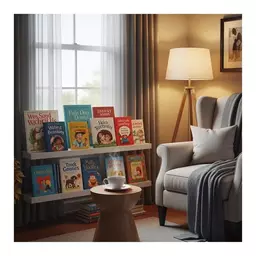 What if the right book could unlock your child's imagination and build their future? Understanding a
What if the right book could unlock your child's imagination and build their future? Understanding a
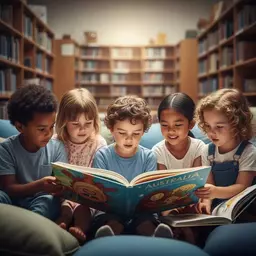 Reading stories isn't just a pastime; it's a powerful catalyst for children's education. Australian
Reading stories isn't just a pastime; it's a powerful catalyst for children's education. Australian
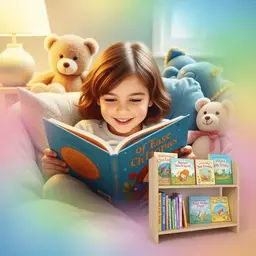 In the words of Aveline Carter, "The journey of discovering books can be just as exciting as reading
In the words of Aveline Carter, "The journey of discovering books can be just as exciting as reading